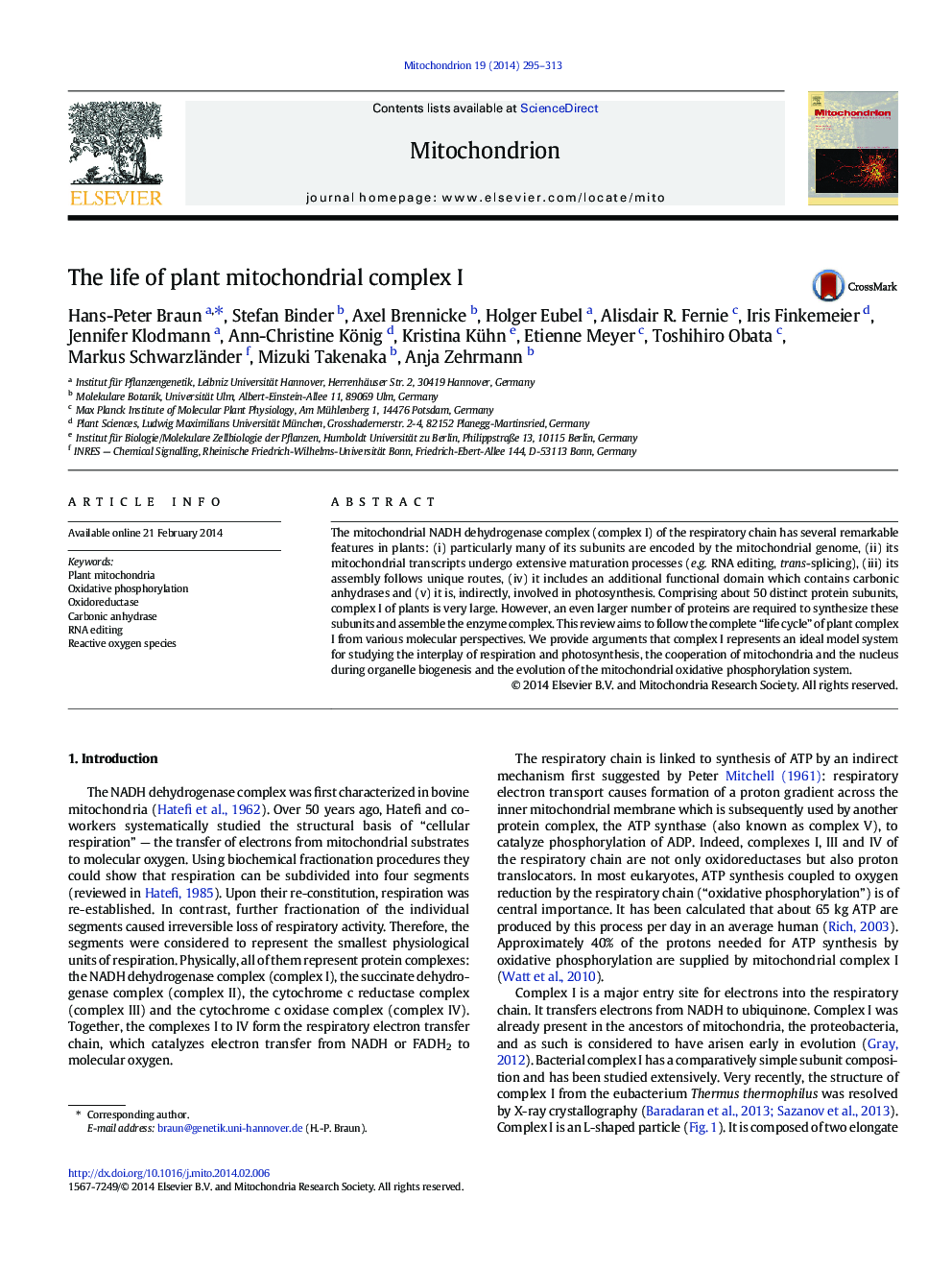| Article ID | Journal | Published Year | Pages | File Type |
|---|---|---|---|---|
| 2068728 | Mitochondrion | 2014 | 19 Pages |
•Mitochondrial complex has several remarkable features in plants.•The “life cycle” of complex I from plants is described from various perspectives.•Arguments are provided that plant complex I represents an ideal model system.•…for studying the molecular interplay of respiration and photosynthesis
The mitochondrial NADH dehydrogenase complex (complex I) of the respiratory chain has several remarkable features in plants: (i) particularly many of its subunits are encoded by the mitochondrial genome, (ii) its mitochondrial transcripts undergo extensive maturation processes (e.g. RNA editing, trans-splicing), (iii) its assembly follows unique routes, (iv) it includes an additional functional domain which contains carbonic anhydrases and (v) it is, indirectly, involved in photosynthesis. Comprising about 50 distinct protein subunits, complex I of plants is very large. However, an even larger number of proteins are required to synthesize these subunits and assemble the enzyme complex. This review aims to follow the complete “life cycle” of plant complex I from various molecular perspectives. We provide arguments that complex I represents an ideal model system for studying the interplay of respiration and photosynthesis, the cooperation of mitochondria and the nucleus during organelle biogenesis and the evolution of the mitochondrial oxidative phosphorylation system.
